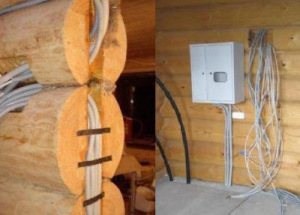The modern private and country house is saturated with electrical appliances if not more, then on an equal basis with the usual city apartment. This can be fully explained by the desire of the owners to create the most comfortable living conditions in the absence of centralized engineering communications: heating and water supply systems, lighting and sewerage. The houses are equipped with powerful pumping equipment, water heaters, electric boilers, convectors and a host of household and kitchen appliances. And given the fact that the wooden structures do not have a high fire resistance, special attention should be paid to the development and creation of a quality and safe electricity supply system at home.
Content
Of course, in each house the electrical wiring should be reliable and absolutely safe. However, with special care should be approached to conduct electrical wiring in combustible structures made of natural wood. To replace the open method of laying the electric cable came a hidden way, reliably protecting the cable from mechanical influences. This option involves laying in the wall and the box, taking into account the most important condition - ensuring absolute fire safety.
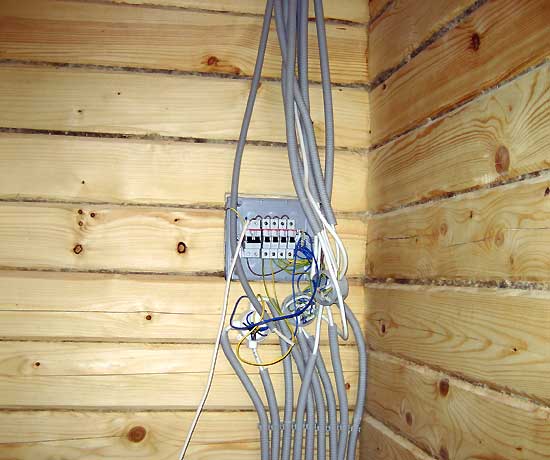
Rules of electrical wiring in a wooden house
Carrying out electrical wiring with your own hands, you should pay attention to the following points:
- the cross-section of the cable must correspond to the load of the devices;
- electric cable is better to use self-extinguishing and not supporting combustion;
- the open method of wiring is no longer welcomed - today the laying is done in special protective boxes;
- low-current cables must be placed in plastic corrugations, preventing their damage;
- the cable of greater power, packed in metal corrugated tubes, is mounted in hollows of ceilings or strobas;
- corrugation must be reliable over the entire length and protected from corrosion, for example, if the corrugated metal is galvanized; dimensions sufficient for laying the cable are selected with a margin of 50%;
- the protective corrugated pipe must terminate at the site of supply of the electric cable to the point of consumption;
- choose fittings designed specifically for wooden houses;
- the wiring distributing blocks should be hidden in the wall and ceiling structures, taking into account the possibility of quick access for repair or maintenance;
- the power supply system must be equipped with residual current devices (RCDs).
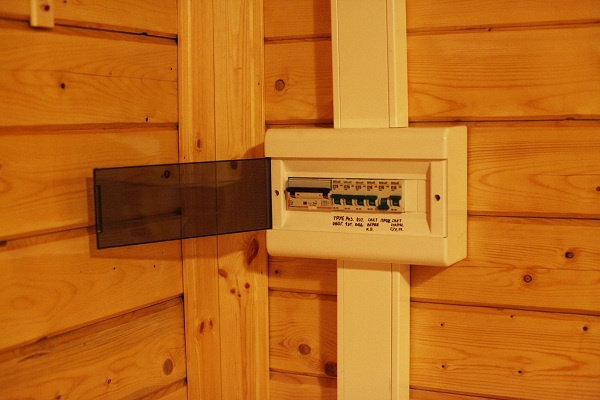
Putting electricity in the house
The basic stage of electrical wiring when building a wooden house is to connect the object to the power grid. Its implementation can be delayed for a long period (several weeks, months), as the norms and provisions of the Electrical Installation Rules, GOSTs and other normative documents establish the procedure for coordinating the introduction of electricity with local authorities, the fire department and the electricity network. Having settled all the questions concerning the electrical connection and the approval of the electrical wiring diagram in the wooden house, having coordinated the necessary documentation, you can safely proceed to the electrical installation.
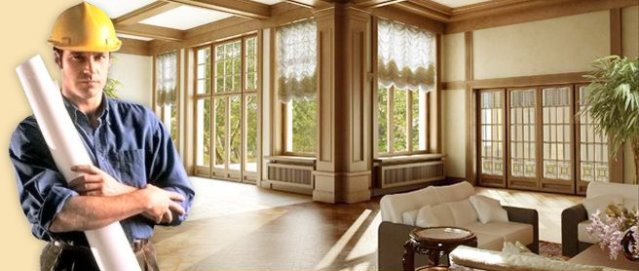
For an offshoot from the power line, an insulated wire with a cross section of at least 16 mm² is used. For example, the electrical cable SIP-4, insulated with a special light-stabilized polyethylene, which allows to preserve the integrity of the cable when exposed to direct sunlight, precipitation and other adverse environmental influences. The life of such a cable reaches 25 years, which is why professional electricians prefer to use it for electricity to a wooden house.
You can not pull the SIP cable into a wooden room for safety reasons, which means that you have to switch to a copper cable from the external wall surface of the wooden structure.
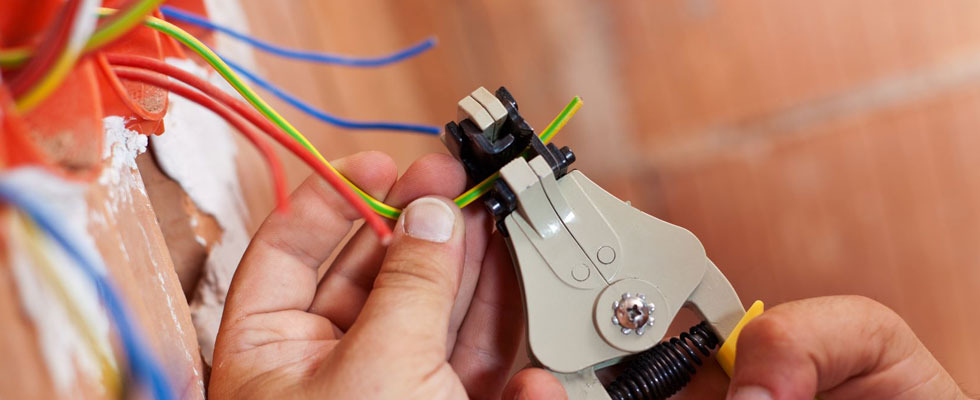
The most reliable and demanded is VVGng, which will be hidden in the corrugated tube. At the site of the electric cable through the wall, use metal tubes with a diameter of 2.8-4.5 mm. Do not use rubber hoses for this - the wires can be damaged in case of shrinkage of the building or destroyed at the time of the occurrence of shorts and fires.
Mounting the electrical panel
For mounting the switchboard you will need:
- automatic protection (introductory, bipolar);
- electric meter;
- automatic and protective shutdown devices;
- connecting busbars;
- filling box;
- cambric.
Carefully refer to the selection of protection devices: their correct selection is based on the number of consumers of electricity, so all questions on the distribution of the load in a wooden house must be solved in advance. Traditionally, it is constructed as follows: the first place in terms of the number of used electrical appliances is occupied by the kitchen, then by the bedroom, the living room and the attic.
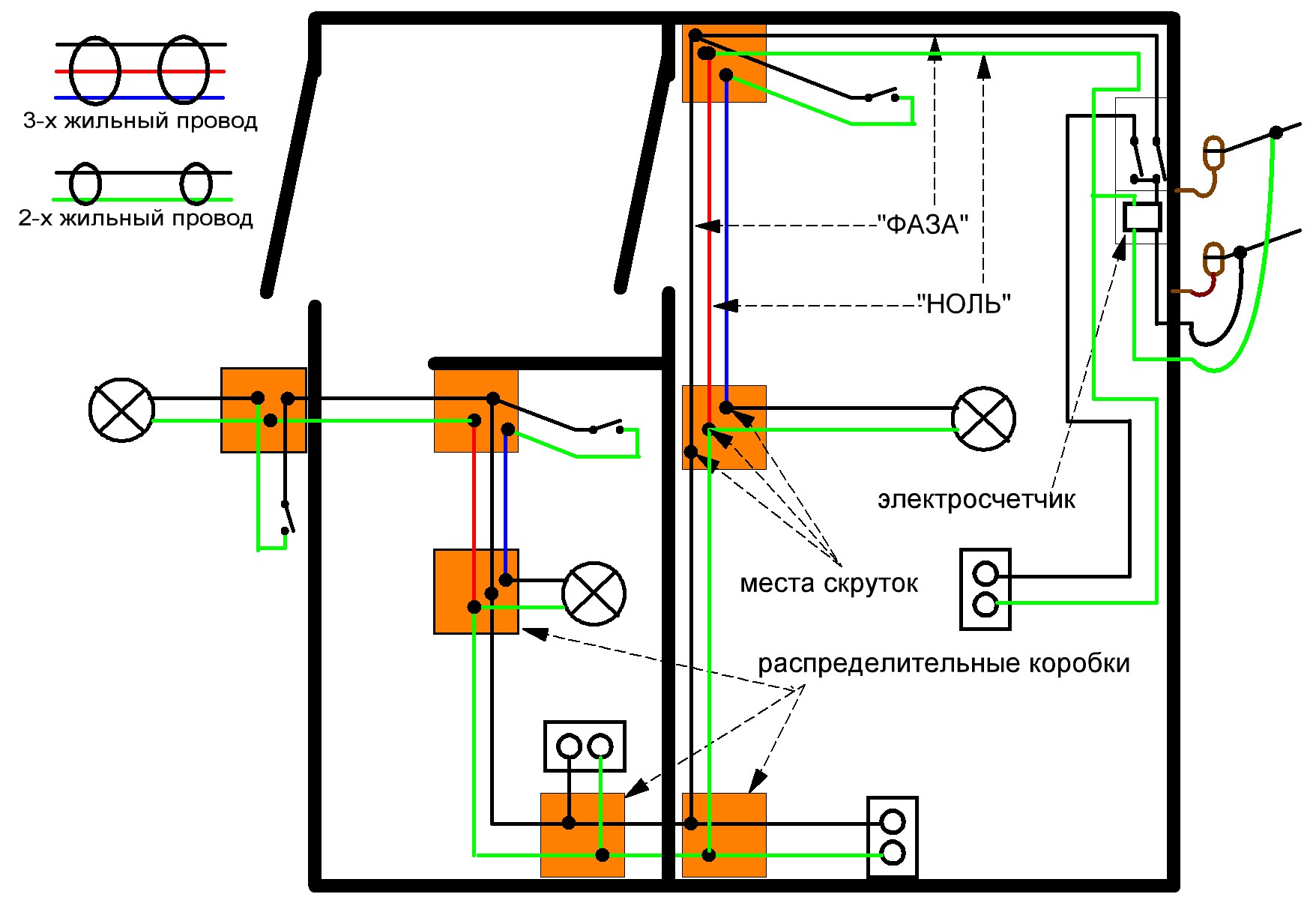
Internal electrical wiring of a wooden house with your own hands
The arrangement of internal wiring can be performed in several common ways:
- open wiring;
- using corrugated pipe;
- with the use of boxes;
- concealed wiring.
Let us dwell in more detail on each method of laying. So, regardless of the way the cable is laid, it should be reflected in the design of the electrical wiring of the wooden house, because there may be a situation in which you urgently need to navigate in the ubiquitous wires.
Open posting
For outdoor installation, it is recommended to use a cable with double and even triple insulation, for example, VVGng or NYM. But the wire with the usual insulation is better not put aside, because it does not meet the safety standards and is not reliable enough. The cable is fastened to the electrical brackets, which perfectly withstand the permissible load. The basic drawback of such a method is an unattractive and untidy appearance, especially in connection areas of several wires.

Laying in corrugated tubes
The method of laying an electric cable by means of a corrugated pipe is similar to the previous method, with the only difference - the corrugation can not be fixed with brackets to the wall, and having such a construction, it is difficult to achieve an ideal perception of the room. At the same time, the corrugation protects the cable from damages of various kinds and prevents the occurrence of shorts and fires.

Gasket in plastic boxes
The use of electrical plastic boxes from non-flame retardant plastic for cable laying is considered the most attractive and reliable method, because at the moment of short circuit they protect from fire. The main advantage of this method is ease of installation, minimum labor, the efficiency of self-replacement of electrical wiring in the house.

Concealed method of laying electric wires
To lay the wiring in a hidden way, pipes of steel or thick plaster layer are used on the cable, previously attached to the surface by electrical staples. Often used copper pipes - they are well bent, laying works do not require a special tool, but their cost is quite large.

Now you know how electricity is supplied to the house, which means you can buy the necessary equipment, develop and approve the electricity supply project, and conduct electricity yourself. More details on how to conduct electricity in a wooden house can be learned from a video on youtube.


